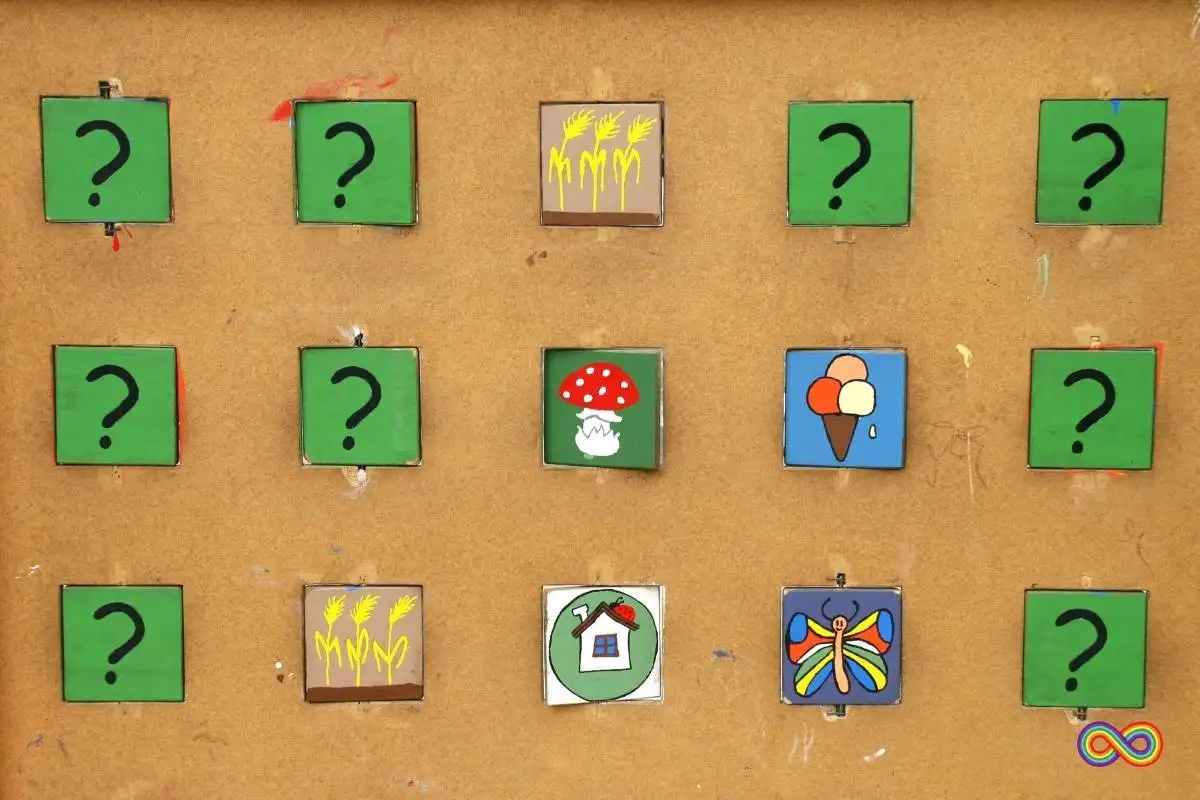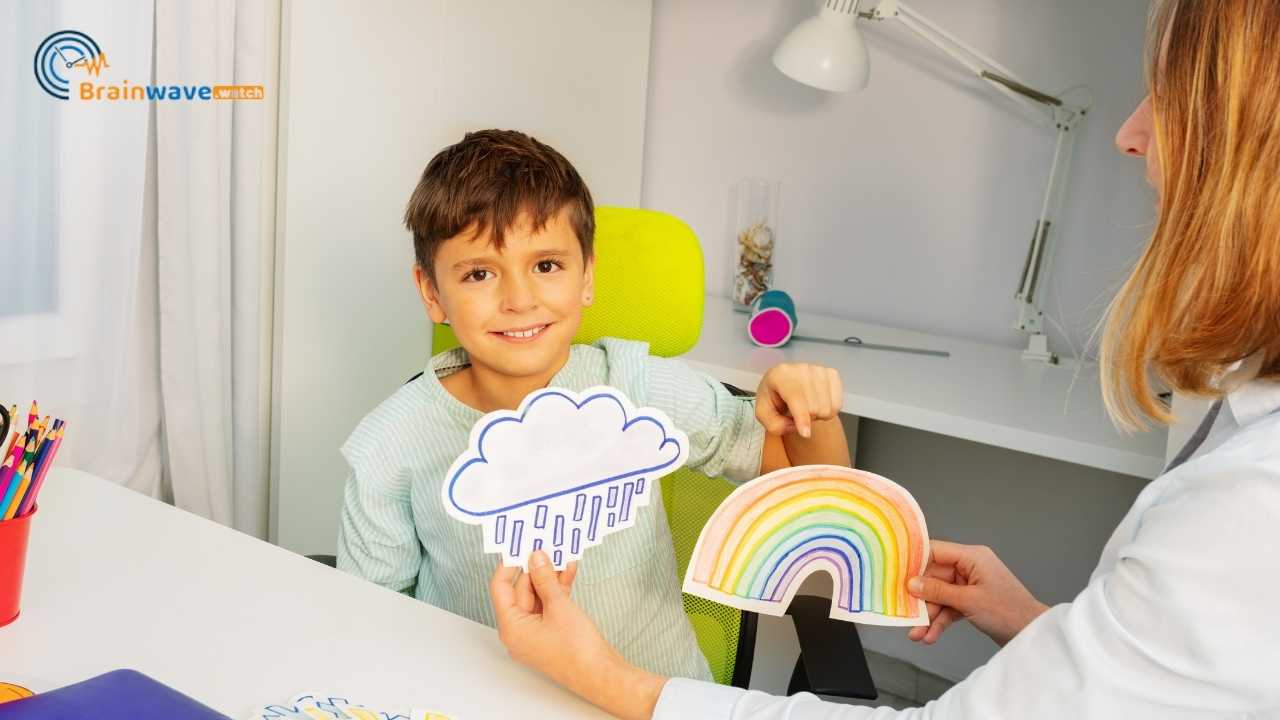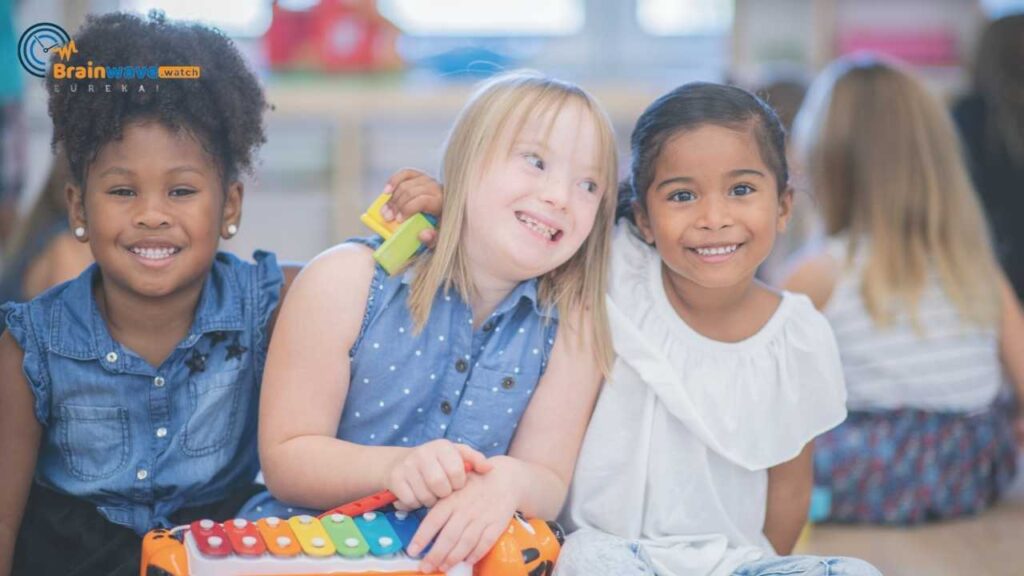Play is critical for children’s development and learning. This is especially true for kids with special needs such as autism, Down syndrome, ADHD, dyslexia, and other conditions. Games provide opportunities for cognitive, physical, social, and emotional growth. They also help kids build confidence, creativity, problem-solving skills, and more.
Games should be tailored to each child’s unique needs and abilities. Some kids may need simpler games with repetition to reinforce concepts. Others may benefit from more challenging games to build new skills. The key is finding games that are accessible, playing to their strengths, and helping the child grow. With the right games, kids with special needs can develop key skills while having fun.
This list features 10 great games for kids with special needs. The games target different skills from matching, memory, and sensory processing to social skills and motor skills. With these games, parents and teachers can help kids learn critical developmental skills through the power of play.
Matching and Memory Games
Matching and memory games are great for developing cognitive skills like focus, memory, and pattern recognition in special needs kids. These types of games are simple but require concentration and repetition to master.
Some top matching and memory games include:
- Memory – This classic game involves laying out cards face down and taking turns flipping them over to find matches. It helps build visual memory skills.
- Concentration – A variation on Memory that uses images instead of matching pairs. Players try to remember the location of matching images. It improves visual memory and concentration.
- Match It! – A game where kids match cards based on colors, shapes, letters, numbers, etc. It helps reinforce early learning concepts.
- Spot It! – A fast-paced matching game where every card has one image that matches another card. It sharpens focus and pattern recognition.
- Puzzle Games – Puzzles require piecing together parts to form a whole picture. They build visual processing and problem-solving.
The repetition involved in playing these games helps strengthen memory, focus, and thinking skills in special needs children. The games also provide a fun, engaging activity to practice cognitive development.
Cause and Effect Games
Cause-and-effect games are excellent for developing logic, critical thinking, and problem-solving skills in kids with special needs. These types of games challenge kids to understand how one event leads to another. Figuring out the relationship between cause and effect promotes cognitive growth.
Some top examples of cause-and-effect games include:
- Rube Goldberg Machines – Rube Goldberg machines are contraptions made of everyday objects rigged together to complete a simple task in an overly complicated, indirect way. Building Rube Goldberg machines encourages creativity, planning, and trial and error. Kids must problem-solve to get each step in the chain reaction to work properly.
- Marble Runs – Marble runs are tracks that marbles roll down, encountering obstacles and contraptions along the way. Like Rube Goldberg machines, marble runs require logic and critical thinking to construct. Kids must figure out how to get the marble from start to finish through chutes, ramps, levers, and more.
- Domino Effect – Lining up dominos in creative formations and then knocking them down is a classic cause-and-effect game. Kids can experiment with domino placements to see how the chain reaction unfolds. It’s an engaging hands-on activity for practicing sequencing, prediction, and fine motor skills.
Cause-and-effect games give kids the chance to tinker, experiment, and discover connections. The sense of accomplishment from completing these challenging and fun games builds self-confidence too.
Sensory Integration Games
Sensory integration games help children with special needs better process sensory information from their environments. They can improve focus, self-regulation, motor skills, and emotional regulation. Some top examples of sensory integration games include:
- Texture balls – Making DIY texture balls with materials like yarn, beads, rice, and sequins provides great tactile input for hands and fingers. Feeling different textures aids sensory discrimination.
- Scooping rice/beans – Filling containers with rice, beans, or sand and having kids scoop and pour back and forth integrates proprioceptive and vestibular input. This crossing the midline activity develops coordination.
- Sensory bins – Filling bins with materials like water beads, shaving cream, kinetic sand, slime, or cloud dough creates an inviting sensory experience. Exploring the textures engages multiple senses.
- Fidget toys – Toys like tangles, pop tubes, and liquid timers offer repetitive sensory input for calming and focus. The sensory feedback can help kids self-regulate.
- Weighted blankets/toys – Deep pressure from weighted objects helps soothe the nervous system. Blankets and lap pads provide calming proprioceptive input.
Sensory play allows kids to get needed input in a fun way. Matching the activities to the child’s needs and challenges can help them process sensory information and participate more fully in learning and social activities.
Social Interaction Games
Social interaction games provide wonderful opportunities for kids with special needs to develop social skills like empathy, cooperation, and communication. Playing games together fosters connections and understanding between kids.
Some top examples of social interaction games include:
- Charades – This classic game encourages nonverbal communication, creativity, and teamwork. Players act out different words and phrases while their teammates try to guess what they are. Charades help kids read social cues.
- Heads Up! – For this popular app game, players hold a card up to their forehead with a word they can’t see. Teammates give clues to help the player guess the word. Heads Up! promotes perspective-taking as kids try to view things from another angle.
- Go Fish – This classic card game teaches turn-taking, conversation skills, handling winning/losing, and patience. Kids learn to engage with others, ask questions, and work together cooperatively. The back-and-forth interactions are great for social development.
The key is finding games that kids enjoy and that provide opportunities for positive social interactions. Playing together builds community, self-confidence, and essential life skills. Social games are an impactful way for kids with special needs to connect with peers and gain social competencies.
Fine Motor Skill Games
Games that involve using the small muscles in the hands and fingers can greatly benefit children with special needs by improving their hand-eye coordination and dexterity. Being able to manipulate objects with precision helps with many tasks involved in daily living. Some great examples of fine motor skill games include:
- LEGO – Building with LEGO bricks is a fun activity that promotes fine motor skills. As children snap the pieces together and pull them apart, they are practicing their pincer grasp and strengthening their finger muscles. LEGO also sparks creativity and problem-solving.
- Lacing cards – Lacing shapes cut into cardboard cards with a shoelace or string is great for developing hand-eye coordination. Kids must concentrate on weaving the lace through the holes. It’s also a calming, repetitive activity.
- Peg puzzles – Fitting pegs into a puzzle board requires pinching, grasping, and rotating motions. Different-sized pegs and holes allow for graded challenges. Peg puzzles encourage concentration and completion of tasks.
- Beading – Stringing beads onto a shoelace or pipe cleaner involves fine finger manipulation. Finding patterns and creating designs provides cognitive benefits too. Beading helps improve dexterity, bilateral coordination, and visual motor skills.
- Tweezer activities – Using tweezers or tongs to pick up and transfer objects strengthens pincer grasps needed for writing and self-care skills. Eye-hand coordination is also improved as kids grasp items with the tool.
Playing games that require controlled movements of the hands and fingers stimulates the sensory receptors in the skin. This feedback helps develop motor pathways in the brain. Fine motor play is key for preschool readiness and academic tasks like writing.
Gross Motor Games
Gross motor skills involve the large muscles that control arm, leg, and body movements. Developing strong gross motor skills provides several benefits for kids with special needs.
Some key benefits include:
- Improved balance and coordination
- Increased muscle strength
- Better body awareness and spatial relations
- Enhanced ability to navigate environments
- More confidence in movement and physical activities
Gross motor games that involve running, jumping, throwing, catching, kicking, and other full-body movements are fantastic for improving these abilities. Here are some top examples:
1. Ring Toss
Ring toss is a classic carnival game that is simple yet engages gross motor skills. Kids take turns throwing rings onto pegs to land the rings over the pegs. This game improves hand-eye coordination, muscle control, balance, and motor planning. It can be adapted by using larger rings and pegs for beginners.
2. Bowling
Bowling allows kids to roll or throw a ball to knock down pins, working on shoulder, arm, and hand muscles. It teaches body positioning, aim, and release of an object. Ramps or bowling aids can help children who need assistance. Simplify the game by using fewer pins.
3. Jumping Games
Jumping jacks, hopscotch, and jump rope are fun activities that build leg strength. They help with bilateral coordination, rhythm, and cardiovascular endurance. Start with basic two-foot jumping before trying advanced skills like hopping sequences. Mark proper foot placement with spots or tape lines.
4. Obstacle Courses
Setting up obstacle courses with tunnels, hoops, and hurdles encourages whole-body movement. Kids crawl, climb, tiptoe, balance, and maneuver through the course. Adjust obstacles based on mobility levels. Focus on completion rather than speed. Spotters can provide support as needed.
The key is choosing games that engage the large muscle groups but start simple. Provide appropriate modifications to enable active participation. Celebrate movement accomplishments and gross motor development through play.
Educational Games
Educational games provide many benefits for kids with special needs when it comes to improving literacy, math, science, and social studies skills. These types of games present core academic concepts in a fun, engaging format that aligns with different learning styles. Some of the top examples of educational games for special needs kids include:
- Bingo – This classic game can be adapted in many ways to target math, reading, science, and social studies skills. Teachers can create customized bingo cards with vocabulary words, math problems, science concepts, historical facts, and more. As concepts are called out, students match them to their cards. This helps reinforce learning in a lively activity.
- Educational Apps – There are many stellar educational apps available today that interactively align with academic standards. These apps allow students to practice skills in areas like phonics, counting, telling time, money recognition, and more. The apps provide feedback and feature adjustable difficulty levels to challenge students at their own pace.
- Trivia Games – Playing trivia games is an enjoyable way for special needs kids to build knowledge. Teachers and parents can create custom trivia games focused on academic subjects or themes they’re studying in class. This allows kids to answer interesting questions and get exposure to new facts and concepts.
- Flashcard Games – Using digital or paper flashcards for learning games builds fluency with key terms, math facts, historical figures, science vocabulary, and more. Students can practice matching, sorting, or quiz-style games with flashcards tailored to their academic needs.
- Board Games – Classic board games like Chutes and Ladders or Hi-Ho Cherry-O can be adapted to integrate math, reading, and other skills practice. Creating a custom board game, or modifying an existing one, allows kids to work on target skills while enjoying interactive play.
Educational games provide a valuable way for special needs kids to practice core skills in a low-pressure, engaging environment. Integrating games that align with classroom learning goals allows students to solidify knowledge while having fun.
Adaptive Games
Adaptive games are designed to accommodate children with a wide range of physical or cognitive abilities. The key feature of adaptive games is providing options to adjust and customize the gameplay experience. This adaptability allows children with special needs to participate and enjoy games alongside their peers.
The importance of adaptability stems from the fact that special needs children have abilities that differ from typical developmental milestones. Adaptive games account for these differences by providing adjustable settings and control methods. For example, a child with limited mobility may need larger, easier-to-grasp game pieces. A child with visual impairment could benefit from high-contrast colors or audio instructions.
Developers are increasingly recognizing the value of building adaptability into games. Some examples of adaptive features include:
- Adjustable size and shape of game pieces
- Alternate control methods like switches, eye tracking, or voice commands
- Customizable level of difficulty and pacing
- Options to reduce sensory stimuli like sounds or graphics
- Text or pictorial instructions to support learning differences
The goal is to remove barriers and open up gameplay to children of all abilities. Adaptive mechanics empower kids to play independently alongside friends. This fosters inclusion, builds self-confidence, and allows special needs children to reap the developmental benefits of play. Ultimately, adaptability expands the audience who can participate in and enjoy games.
Selecting Appropriate Games
When selecting games for special needs children, it is important to consider their unique needs and abilities. Here are some factors to consider when selecting appropriate games:
Age-Appropriate Content
It is important to choose games that are age-appropriate and match the child’s developmental level. For example, younger children may benefit from games that focus on basic skills such as color recognition, counting, and matching. Older children may benefit from games that focus on more complex skills such as problem-solving, strategy, and critical thinking.
Adaptive Technology and Interfaces
Adaptive technology and interfaces can help special needs children access and enjoy games that might otherwise be too difficult or frustrating. For example, some games may have adjustable difficulty levels, customizable controls, or visual and auditory cues to help guide the child. It is important to consider the child’s specific needs and abilities when selecting games with adaptive technology and interfaces.
Designing Inclusive Games
Designing games for children with special needs requires a user-centered approach that considers the unique needs and abilities of each child. Inclusive game design is the process of creating games that are accessible to all players, regardless of their physical, cognitive, or sensory abilities. Designing inclusive games involves incorporating user-centered design principles, accessibility features, and inclusive playtesting.
User-Centered Design Principles
User-centered design principles are essential to designing inclusive games. These principles involve understanding the needs, preferences, and abilities of the target audience and incorporating these factors into the design process. Designers should involve children with special needs and their families in the design process to ensure that the game meets their needs.
Accessibility Features
Accessibility features are critical to making games inclusive for children with special needs. These features include visual, auditory, and motor accessibility options. Visual accessibility features include high-contrast modes, subtitles, and text-to-speech options. Auditory accessibility features include captioning, sound effects, and audio descriptions. Motor accessibility features include customizable controls, touchscreen options, and adaptive controllers.
Inclusive Playtesting
Inclusive playtesting is the process of testing the game with children with special needs to ensure that it is accessible and engaging. Playtesting should involve a diverse group of children with various abilities, including those with physical, cognitive, and sensory disabilities. Playtesting should be conducted in a real-world setting to identify any potential accessibility issues and to gather feedback from children and their families.
Designing inclusive games requires a user-centered approach that considers the unique needs and abilities of each child. Incorporating user-centered design principles, accessibility features, and inclusive playtesting can help ensure that games are accessible and engaging for all children, regardless of their abilities.
Resources and Support
When it comes to finding resources and support for special needs kids, there are many options available. Here are some suggestions to help parents and caregivers find the right support for their child:
Online Communities
Online communities can provide a wealth of information, support, and advice for parents of special needs kids. There are many online forums and groups dedicated to special needs parenting, where parents can connect with others who are going through similar experiences. Some popular online communities include:
Parental Guides
Parental guides can be a great resource for parents who are looking for advice, tips, and strategies for raising a special needs child. There are many books, websites, and blogs that offer guidance on a variety of topics, including:
Professional Recommendations
In addition to online communities and parental guides, parents can also seek out professional recommendations for support. This can include working with a therapist, counselor, or other professional who specializes in working with special needs kids. Some resources for finding professional support include:
- American Psychological Association
- National Association of School Psychologists
- National Institute of Mental Health
Conclusion
Games can provide many developmental benefits for children with special needs. Matching, memory, cause and effect, sensory integration, social interaction, fine motor, gross motor, educational, and adaptive games all help kids strengthen important cognitive, physical, emotional, and social skills in fun ways tailored to their individual needs and interests.
The key is finding games that align with each child’s specific developmental goals. Work closely with therapists and teachers to identify target skills to build. Observe the child at play to note their preferences and challenges. Select games that feel enjoyable yet provide the right amount of challenge to encourage growth in needed areas. Adapt games as necessary to make them accessible. Most importantly, keep the focus on fun and bonding during playtime. With the right games played in a supportive environment, children with special needs can thrive.













